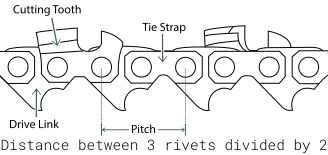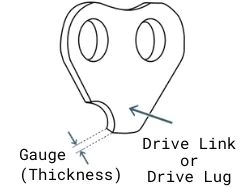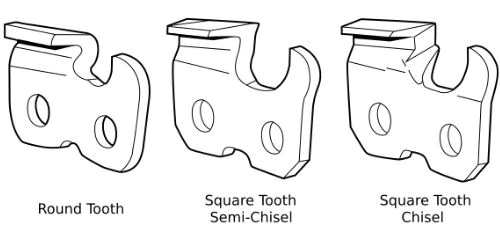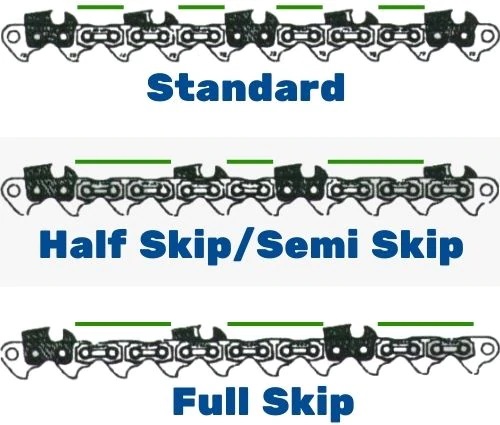Determining the right chainsaw chain size can be confusing for anyone who does not use chainsaws on a regular basis. If you are not a chainsaw expert and need to replace your chainsaw chain, this how-to guide should tell you everything you need to know to ensure the replacement chainsaw chain you purchase will fit and work with your chainsaw.
3 Measurements To Buy The Right Chain For Your Saw
The 3 things you need to know about the chain your chainsaw accepts is the pitch, gauge, and number of drive links.
Let's learn what each of these chainsaw chain characteristics are.
Chainsaw Chain Size Formula
(Pitch + Gauge) + Number of Drive Links = Chainsaw Chain Size/Length

Chainsaw Chain Pitch
The pitch of a chainsaw chain refers to the distance between the drive lugs. Drive lugs are also called drive links. An easy reference for measuring pitch is every 3 rivets. Divide the distance between 3 rivets by 2 to get the pitch.
Pitch determines if the chain will fit the chainsaw's sprocket.
Most chains saws use 0.325", 3/8", or 0.404" pitch, with 1/4" being a less common size that is also used on some saws. 1/2" pitch can be found on some older saws.
Most consumer chainsaws use low profile chains which is a special version of a 3/8" pitch. Stihl and other brands refer to low profile as Picco.
Chainsaw Chain Gauge
The gauge of a chainsaw chain is the thickness, or width, of the drive lugs.
Most chainsaws use 0.050" (1.3 mm) and 0.058" (1.5 mm) gauge chains. 0.043" (1.1 mm) and 0.063" (1.6mm) gauge chains are less common.


Number of Chainsaw Chain Drive Links
The number of drive links can be determined by counting the drive links on the chain you are replacing.
Cutter Type

Anti Kickback (low)
This is by far the most common chain available and has been designed to prevent kickback. Think of kickback as being a treadmill at high speed, as soon as you step on it, it throws you off. The same can happen with a chainsaw when the tip comes into contact with the piece of wood. The rotating chain effectively gets thrown back toward the user. By reducing the amount of material that can be cut at any one time, and at a slower speed, there is less chance of kickback occurring.
Skip Tooth (medium)
These chains are also commonly referred to as ‘regular’ chains. They are typically used for professional use and feature a space between each cutting link. This results in the chain having less resistance and an improved cutting rate. However, it also reduces the smooth finish that a low-kickback chain provides.
Full Skip (aggressive)
A full skip chain is at the most aggressive end of the spectrum, meaning it is able to quickly work its way through the wood it is cutting. Much like the skip-tooth, the full-skip has spaces between the cutting teeth (two links instead of one) and is intended for larger chainsaws. And while this is the fastest chain for cutting, it requires skill and experience to operate.

